For a pdf of this article, click here.
How do we determine proper seat sizing? It has less to do with the inches than you think! Our goal as saddle fitters, once we’ve determined the fit and balance is correct for your horse, is to balance the rider in the seat. Riding in a seat size that is too small will not only pitch the rider’s upper body forward, but can also put excessive pressure to the rear of the tree and panel on the horse’s back. Alternatively, a seat size that is too big can cause the rider to be tipped backwards and feel like they’re swimming or fighting to keep up with their horse’s motion.

17″ – Too small! The rider will feel cramped. Their upper body will have a tendency to pitch forward and all the weight through the seat is tipped forward on to the pubic bone (it also makes seat cues and half-halts harder).
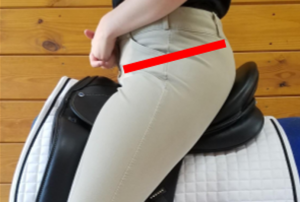
17.5″ – This is slightly better, but the rider will still have issues with the upper body and the weight tipped forward on to the pubic bone.
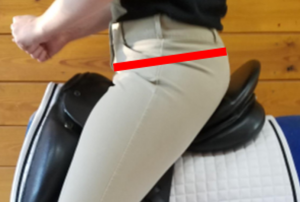
18″ – The rider is now balanced on the seat. Their weight is distributed evenly between the pubic and rear seat bones (now able to use half-halts and driving aids accurately), with a more supported upper body.
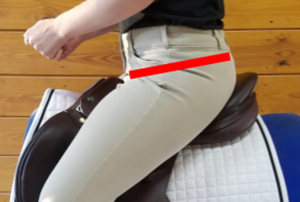
17″ – Too small! The rider’s pelvis is tilted forward and will feel cramped while moving. The upper body will have a tendency to pitch forward, with all the seat pressure on the pubic bone.
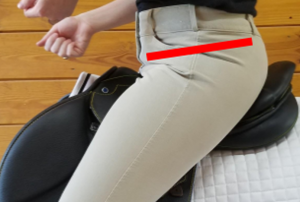
17.5″ – Slightly better, but the rider will still feel pitched forward in the seat and the upper body, and more seat pressure on the pubic bone too.
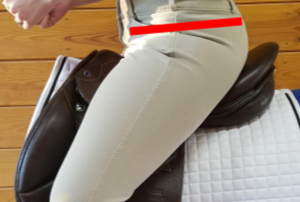
18″ – A proper hunt seat position with a slight curve in the lower spine. Seat pressure is distributed evenly between the pubic and rear seat bones.
A properly fitted seat will allow the rider’s weight to evenly distribute through their whole pelvis and use their half-halts and driving aids more accurately, plus will result in a more supported upper body. Remember; balanced fit, better ride!

